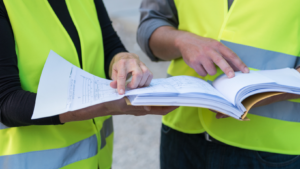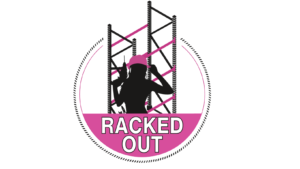Yes, yes, you know. Safety inspections are important. They fulfill the necessary requirement of ensuring you are meeting all proper safety standards and regulations outlined by all governing bodies. You know they are important. You know they keep you, your staff and even your product safe.
But they are a hassle, aren’t they? And they can be nerve racking. Sometimes, it might feel impossible to tend to every small and seemingly innocuous problem that could lead to an unsafe condition.
Yet the risks of not conducting a safety inspection far outweigh the hassle of conducting one regularly. That cracked warehouse window, the rust on the side of a rack storing product, the leak near the exit. They are easy enough to work around, or even ignore. That is until, a situation risking health and safety puts your product and staff in danger.
When disaster strikes, it can take with it your company’s industry reputation, affect your public image, create costly delays, down time, and additional safety reviews. It can even lead to fines, stop-work orders and most regretfully, may even harm the people who work for you.
The fact is, with a little foresight and planning, all these potential risks can be mediated.
Today, we are talking about the many benefits of conducting third-party safety inspections. What are they? How do they work? What are the benefits, really.
What can you do to make them part of your on-going protocols to ensure your warehouse, your product, and your people, are always safe.
What Is An Annual Safety Inspection?

The Ontario government can conduct safety inspections Proactively, and Reactively. Let’s take a quick moment to break down the difference.
Proactive inspections are often unannounced. These are conducted with the goals of raising awareness about unsafe working conditions, to inform workplace parties of their obligations, rights and responsibilities, to provide assistance in compliance and to ensure that the workplace is adhering to the occupational health and safety legislation.
Reactive inspections occur in response to workplace safety issues such as a fatality, critical injury, work refusal, complaint, related safety event or occupation illness.
Interested in finding out more about the specifics of workplace safety inspections conducted by the government of Ontario? We’ve linked to their official site page on the subject, which outlines in great detail the roles of inspectors, the documentation they utilize, the ramifications for unsafe conditions and various resources for additional support.
Why Do Safety Inspections Matter, And Why Do I Need A Safety Inspection?

The idea of having a government-issued OSHA inspector conduct an unannounced inspection of your warehouse may cause anxiety. It may even feel invasive to have an inspector move through your facility for the expressed need to seek out safety concerns.
If an inspector finds health and safety violations they’ll have a series of ways to deal with them. They may simply note them, provide you with considerations, resources and suggestions for addressing them, and move on- with the understanding that these issues will need to be quickly addressed by your team.
In more serious workplace violations, they may issue you a fine or a ticket, or even a stop-work order until the issues are fixed. In very serious situations (usually where grievous injury or loss of life occurs) your company could be shut down or charged.
Yet, these inspections are necessary. While safety inspectors are not there to get you, or your warehouse “in trouble”, their inspections are geared towards ensuring optimal health and best safety practices for all.
Still feeling a bit nervous about safety inspections? We get it.
The good news is, there are ways to proactively address almost any safety concern, by seeking out additional safety professionals and embedding safety protocols into your standard working practices. One of the easiest ways to do this is to incorporate pre-start and annual safety reviews into your on-going safety protocols. We will break this down for you throughout the rest of our article.
Okay, So What Can I Do To Prepare For A Safety Inspection?

As we’ve previously discussed, an Ontario company is under an obligation by the Ontario Health and Safety Act (OHSA) to provide a safe working environment. Specifically regarding those managing a warehouse with racking systems, you’ll be required to ensure your systems meet the guidelines laid out under Regulation 851 of the OHSA.
By getting an annual Pre-Start safety review from a third party company, you’ll be able to know in advance that your warehouse and its racking system are already in accordance with the regulations.
Professional racking companies like Racked Out offer Pre-Start Safety Reviews, which can save you from the hassle of costly delays and downtime.
Racked Out’s safety services include:
- Conducting PSRs on installations as required;
- Providing and supporting engineering services for PSR or stamped drawings;
- Inspecting your racking systems and recommending / executing necessary repairs to maintain compliance;
- Pre-installation floor analysis to ensure adequate support and concrete depth are present;
- Obtain municipal building permits and work with local building and fire inspectors in all aspects of rack and/or mezzanine installation, structural tie-in and emergency egress;
- Setup inspection and maintenance plans to ensure continued compliance and worker safety;
- Training recommendations and awareness on maximum rack loads, and inspection routines.
Okay, So What Is A Pre-Start Health And Safety Review (PSR)?

A good question! A pre-start Health and Safety review is essentially an inspection of your racking and related equipment at your facility by a professional racking installer accompanied by a Professional Engineer (P.Eng) certified by and in good-standing with Professional Engineers of Ontario.
It’s important to note that a PSR is required whenever a new or used racking system is installed or modified, moved or repaired.
The report that is issued as part of the Pre-Start review must bear an engineer’s seal and should be kept near the location of the racking for easy access by your own safety team or for Ministry inspector examination.
Are There Expectations From The Ministry Of Labour For A Pre-Start Safety Review?
Yes! There are requirements for a PSR that the ministry will expect. These are:
- A PSR or equivalent manufacturer supplied documentation showing the installation and selection of racking has been designed and tested to meet or exceed current standards;
- Ongoing Operations: Racking must be kept in safe, good condition at all times and damaged components repaired or replaced;
- Loading and unloading of pallet racks is done a safe manner
- Lift and pallet truck operators hold valid certification / tickets as applicable for the equipment;
- Aisles are kept free of obstructions;
- Adequate lighting (natural and/or artificial) is operational;
- Pallets are in good condition.
Thankfully, you or anyone, getting a PSR from a reputable Racking Company such as Racked Out, will receive all the clearances for the above. If you are found to be in violation in any area of concern, your PSR provider will be able to swiftly identify the problem, and the best solution.
Both the ministry and Racked Out strongly encourage on-going training on rack load recommendations, tracking and reporting system damage, safe operation of equipment around racking installations, daily inspection duties and any other site-specific requirements.
Interested in finding out even more about the safety requirements for OSHA? Check out the complete guide on their website from the Minister of Labour, Training and Skills Development.
That’s Great- But How Does That Help Me With OHSA Inspections?
You won’t be able to stop unannounced inspections, but by embedding a pre-start review into your annual safety protocol, you’ll always ensure you have up-to-date documentation proving your compliance with all standard safety protocols for your racking system. Outside of ensuring all other basic safety functions are in place, your PSR provides the inspector with knowledge of your on-going safe practices.
Since PSR’s are required any time you install or augment your racking system, you’ll need updated PSRs’ anytime you relocate, relevel or in any way change your system.
Yet, because racking systems may not be updated yearly, we can recommend adding a PSR or other safety services to your annual inspection check-list. You can keep the proof and documentation of these services on hand for any time an unannounced inspection should happen.
What Sorts Of Other Safety Services Do You Offer?

This is a great question! Even in the event where you don’t need a PSR, racking companies such as Racked Out can offer a wide variety of safety services. These include:
– Training for loading techniques;
– Training to understand load ratings;
– Training for understanding warehouse needs;
– Assessment for load bearing systems, safe racking layout and design;
– Assessment and Consultation for facility safety features and products such as floor protectors, safety guards, wall protection and more!
Not only can we install various safety systems, we can train your team on loading techniques and understanding load ratings. Understanding your warehouse is the first step in preventing damage and ensuring safety for your employees.
Want to hear about our additional safety products? Check us out here.
Conclusion
It’s always a good idea to have your warehouse safety checked regularly. Coupling a PSR with your annual safety checklist is a great way to ensure you always have updated documentation any time you get a call from a safety inspector.
Contacting a company with expert skills in Warehouse safety for on-going training and safety consultations is a great way to ensure on-going compliance with all safety regulations. And remember- compliance means you care!
